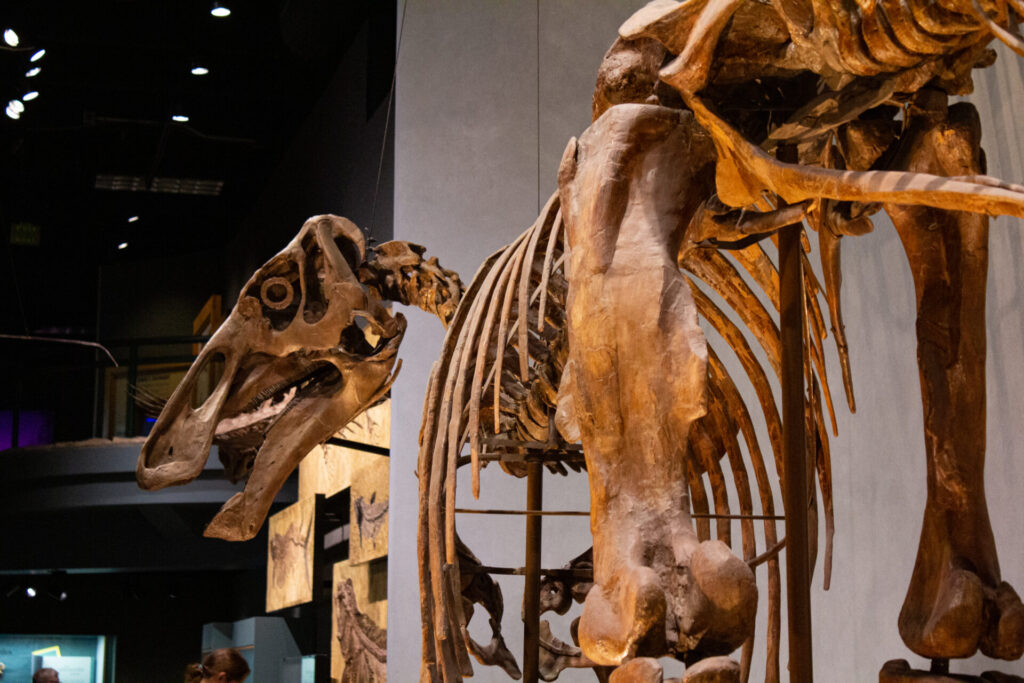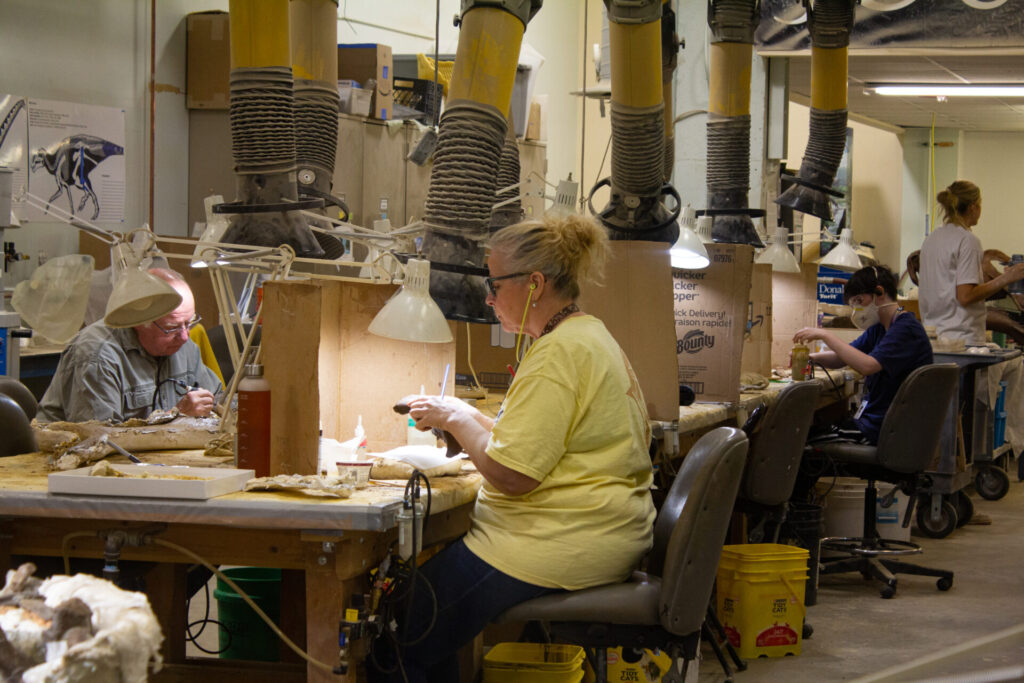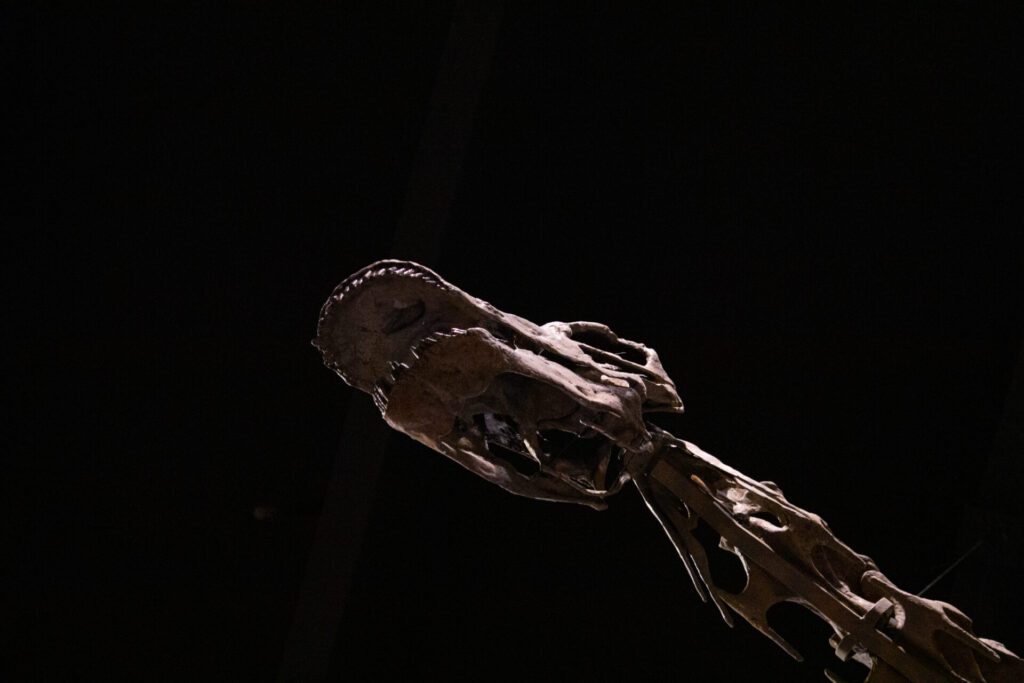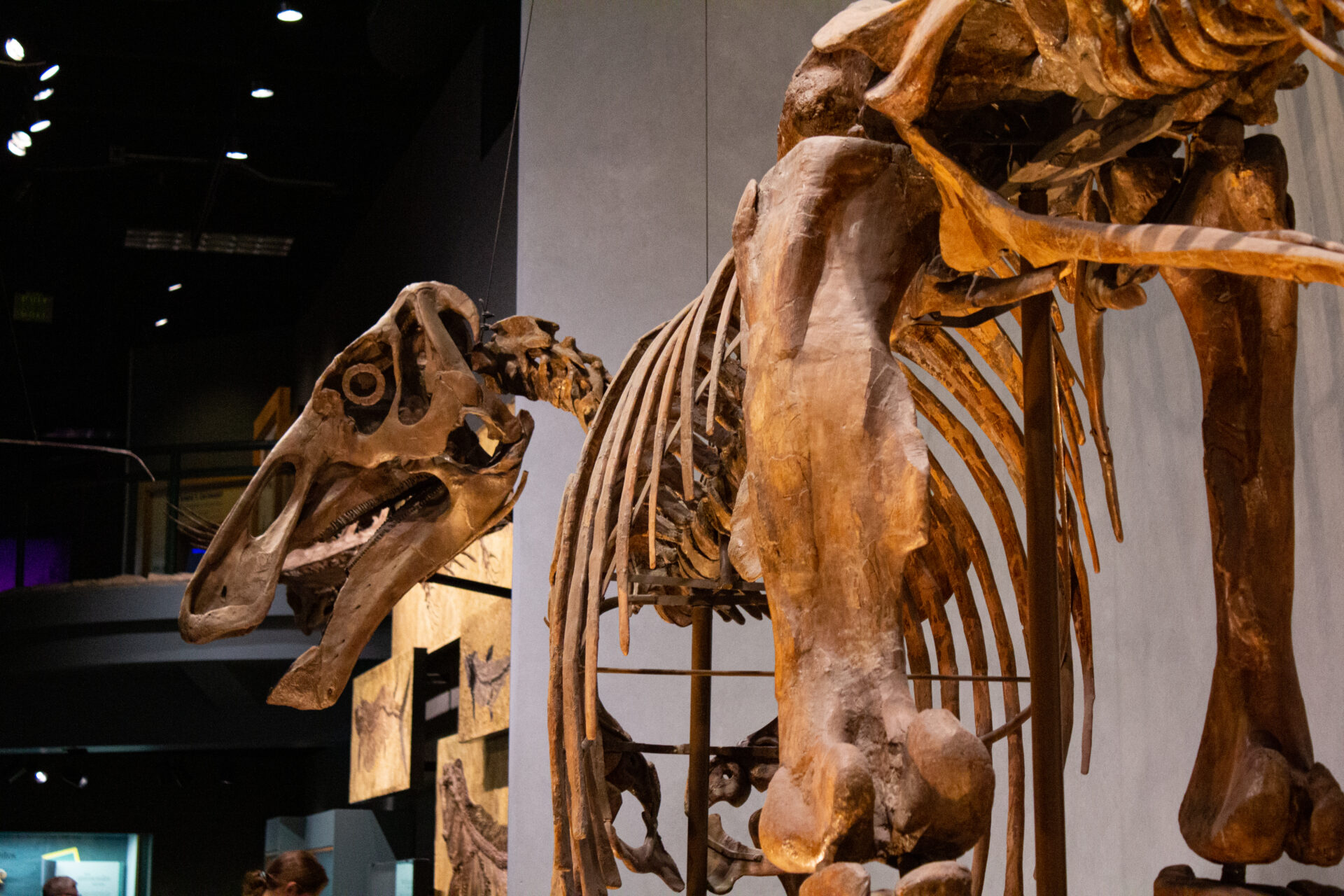Article by Anoush Ralapanawe + Interview by Leon Spiess + Photo by Lily Wright

A dinosaur skeleton featured in the Denver Museum of Nature and Science (Lily Wright | Radio 1190)
It was July of 2022. Cousins Liam Fisher, Jessin Fisher and Kaiden Madsen were on an ordinary hike in the notoriously fossil rich Badlands of North Dakota when they made an extraordinary find: a mostly complete fossil of a juvenile Tyrannosaurus Rex. Upon making this discovery, Liam and Jessin’s father, Sam Fisher, immediately contacted his childhood friend Dr. Tyler Leeson, the Curator of Paleontology at the Denver Museum of Nature and Science (DMNS).
After the subsequent wait for excavation permits and weather considerations, researchers from the DMNS were finally able to return to the site in July 2023 to uncover the bone bar and outline the skeleton. Wary of the potential to make mistakes out in the field, they brought the over 6,000 pound chunk of Earth, known as the field jacket, back to the museum in Denver. This jacket, as well as the meticulous process of uncovering, identifying and then studying the fossils within it is the main feature of the DMNS’s latest yearlong exhibit, titled ‘Discovering Teen Rex.’

Scientists at the Denver Museum of Nature and science examining dinosaur skeletons (Lily Wright | Radio 1190)
Most of the over 100 T. Rex fossils found in modern circulation are based on just a couple of bones, largely neck and tail bones, with only around 30 to 40 specimens over 30% complete. Fossils of the juvenile T. Rex are even rarer, making up only about five or six of these somewhat complete specimens as due to their smaller size, they are often much harder to find and much more likely to have been completely processed (eaten) after their death.
Despite their rarity, juvenile specimens like the Teen Rex are crucial for developing a better understanding of how T. Rexs grow from chick sized babies to over 8,000 pound apex predators. Paleontologists are particularly interested in using these fossils to study how dinosaurs’ bones shift and change as they grow, including reaching skeletal maturity, which bones fuse together and their rate of growth. Since the specimen contains both a skull and parts of the leg, researchers hope the Teen Rex could also be a key to solving a decades-long taxonomical debate within Paleontology about whether some of the smaller Tyrannosaurus specimens represent a different orthogenic stage of the T. Rex lineage (i.e. a younger dinosaur) or a completely different type of dinosaur, known as the Nanotyrannasaurus.

A Long-necked dinosaur skeleton stands proud in a Denver Museum of Nature and Science Exhibit (Lily Wright | Radio 1190)

As it is largely considered to be the primary differentiator between the two, uncovering and studying the Teen Rex’s skull will be of great importance to the team at the DMNS. Similarly, the leg bones, once excavated and cast, will be cut into cross sections, allowing researchers to see lines of arrested growth and accurately determine the dinosaur’s age upon death. Based on initial observation, Dr. Leeson estimates the dinosaur to have been around 13-15 years old when it died, growing to a (still) impressive 3,500 lbs and 25 feet in length before it was buried under around 10 to 12 feet of sandbar dirt on an ancient river bank.
Over the next year, visitors of the DMNS will be able to watch this discovery as it unfolds in real time, accompanied by other fossils of the Teen Rex’s ‘friends,’ namely other dinosaurs and animals from around the same time as the specimen, known as the Late Cretaceous period.
Among them will be the Hadrosauridae, or the duck-billed dinosaur, several juvenile Brachiosauruses, known for their famously long necks, other lesser known dinosaurs and several different ancient species of crocodiles and turtles. The exhibit will also feature a giant screen film about the Teen Rex’s discovery and excavation, featuring the family who made this once in a lifetime find and the researchers who tirelessly worked to bring it to Colorado.
Posted on Jul 3 – 7:50pm

